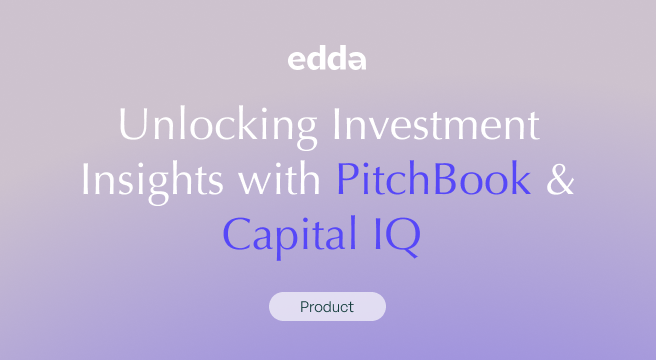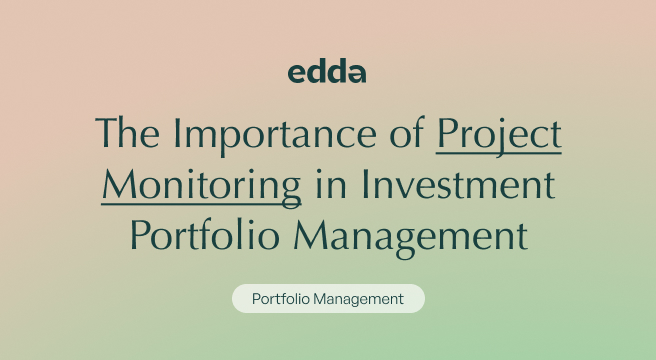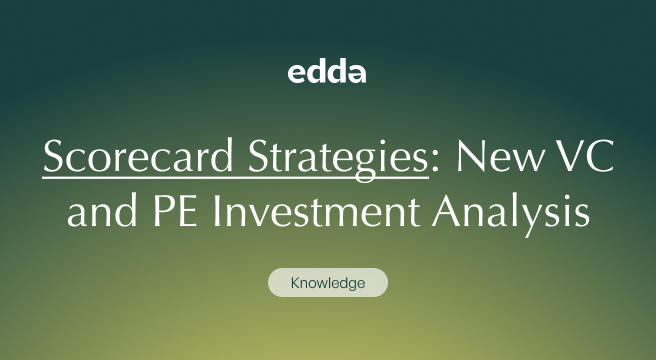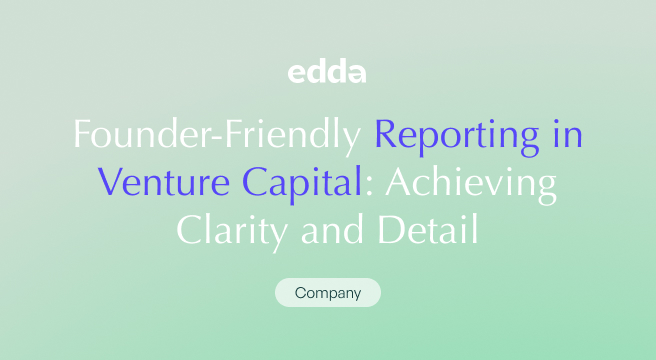PitchBook and Capital IQ are among the most well-known financial analytics and data provision resources for investors. Both are tailored to meet the nuanced demands of a wide range of professionals across the finance industry, but while they share a foundational commitment to delivering in-depth data and analytical capabilities, their distinct functionalities cater to different user needs and preferences.
PitchBook
PitchBook is renowned for its exhaustive coverage of the private equity and venture capital (VC) sectors. Professionals deeply focused on emerging companies and startups find PitchBook’s targeted data indispensable for uncovering investment opportunities, tracking competitors, and offering granular insights into the lifecycle of private companies.
Features:
- Startup and VC Database: PitchBook offers an expansive database of startups, VC firms, and funding rounds, making it a vital resource for identifying emerging trends and investment opportunities.
- Deal Tracking: Users can monitor and analyze detailed information on private equity deals, venture capital funding rounds, and M&A transactions, complete with financial terms, participants, and outcomes.
- Investor Profiles: The platform provides profiles of venture capital and private equity firms, including their investment preferences, portfolio companies, and historical deal performance.
Capital IQ
Operated by S&P Global, Capital IQ contains a vast repository of information that spans both public and private entities worldwide. For those whose work spans a broader array of financial markets, including public equities, fixed income, and commodities, or requires in-depth credit analysis, Capital IQ is an ideal go-to tool.
Features:
- Financial Statements & Ratios: Capital IQ provides detailed financial statements and ratios for public and private companies, facilitating deep financial analysis and company valuation.
- Market Data: The platform offers real-time and historical data across various asset classes, including equities, fixed income, and commodities, alongside market indices and economic data.
- Credit Research & Ratings: Users have access to S&P credit ratings and research, supporting risk assessment and investment decision-making.
Market Insight & Trends
Both PitchBook and Capital IQ software venture capital tools deliver real-time data insights on market trends. With these tools, analysts can gain a comprehensive understanding of the current investment climates, sector growth trajectories, and emerging opportunities.
PitchBook is particularly valued for its targeted insights into the private equity, venture capital, and startup ecosystems, essential for stakeholders within these domains.
Capital IQ, on the other hand, extends its offerings to a broader spectrum, encompassing a wide range of industries and financial markets. As such, Capital IQ caters to a diverse set of professionals including those in investment banking, corporate finance, and asset management.
The rich, timely information provided by both platforms is pivotal for making well-informed investment decisions and for pinpointing sectors or industries that are on the cusp of significant growth.
Take for example an investment firm looking to diversify its portfolio into the renewable energy sector. PitchBook’s detailed reports on market trends within the private markets can provide the firm with valuable insights into the growth rate of the renewable energy sector, highlighting emerging companies and innovative startups at the forefront of this industry.
Capital IQ can offer a broader perspective by including established public companies and a wider array of financial data encompassing the entire renewable energy market.
Company & Deal Information
PitchBook and Capital IQ both offer comprehensive insights into deal-specific data, facilitating a deep dive into the financials, leadership, investment history and deal dynamics of potential investment targets.
PitchBook stands out for its extensive coverage of the startup and venture capital sectors, providing detailed profiles that include financial health, key management teams, past funding rounds, and valuations of emerging companies.
This specificity is invaluable for VCs, especially those scouting for promising startups. The platform’s focus on the nuances of startup funding allows investors to conduct a thorough analysis, aligning potential investments with their strategic objectives.
Capital IQ offers a wider lens, encompassing a vast array of industries and markets, including public companies. Its strength lies in delivering a holistic view of companies’ financial standings, deal terms, and comprehensive market data. This breadth is particularly beneficial for understanding the broader competitive landscape and for evaluating established companies alongside newcomers.
For instance, a VC exploring the fintech sector could leverage PitchBook to unearth detailed information on high-potential startups, focusing on innovation and growth prospects within this niche.
Capital IQ could be used to assess the overall fintech market, including more mature companies, to ensure a balanced and informed investment strategy that considers both the pioneering spirit of startups and the stability of established firms.
Investor Tracking & Analysis
PitchBook and Capital IQ equip users to monitor and evaluate the engagement of a broad spectrum of investors, ranging from institutional entities and VC groups to individual angel investors.
This encompasses a detailed examination of their investment patterns, portfolio compositions, and historical performance metrics. Such analytical depth is crucial for mapping out potential alliances or for conducting a thorough evaluation of an investor’s historical success rate.
For example, a private equity firm focusing on the healthcare sector could leverage PitchBook for its strong suit in private market dynamics. PitchBook’s database would provide insights into the VC investments within healthcare, revealing emerging startups, notable funding rounds, and key investors driving innovation in this space.
Capital IQ can be used to broaden the analysis, incorporating a holistic view that includes public market investments in healthcare. Capital IQ’s broad dataset offers a macro perspective, covering market trends, investment sizes, and the strategic moves of major healthcare corporations and institutional investors.
Networking & Relationship Building
Both PitchBook and Capital IQ are powerful conduits for fostering connections and building strategic relationships with, expansive databases that enable users to engage with a wide array of key industry players, from potential investors and collaborators to prospective acquisition targets.
For an entrepreneur poised to propel her biotech venture to new heights, the combined strengths of PitchBook and Capital IQ can be particularly advantageous. Through PitchBook, she can pinpoint investors with a proven track record in the biotech sector, gaining insights into their investment history and areas of expertise. This allows for targeted outreach to those most likely to understand and support the startup’s vision and objectives.
Capital IQ can broaden the scope of her networking efforts by providing access to a wider spectrum of stakeholders, including corporate investors, industry analysts, and potential partners across the global biotech landscape.
Fundraising Intelligence
PitchBook and Capital IQ provide a wealth of valuable insights for those in pursuit of funding. These platforms illuminate fundraising activities, detailing investor inclinations, historical financing rounds, and prevailing market valuations. This information empowers companies to refine their fundraising strategies so that their proposals resonate with the most suitable investors.
Consider a software company on the cusp of launching its Series B financing initiative. Utilizing PitchBook, the firm can explore nuanced data specific to its industry, analyzing investment magnitudes, company valuations at funding, and profiles of active investors within the tech sphere. This targeted research facilitates a pitch that is fully aligned with the expectations and interests of investors in the software domain.
Capital IQ offers a macro view of the financial markets, providing additional context on broader investment trends and potential sources of capital beyond the conventional VC realm. This might include strategic corporate investors, private equity firms with a tech focus, or other financial institutions with an appetite for innovative software solutions.
Valuation Data
PitchBook and Capital IQ provide an extensive suite of valuation tools and data critical for assessing the market value of businesses and assets. They provide access to a broad spectrum of financial information, including comparable company analyses, precedent transaction records, and key financial metrics, which are indispensable for conducting thorough valuation analyses in line with current market standards.
When a large corporation’s acquisition team is tasked with evaluating the potential purchase of a smaller competitor, the combined capabilities of PitchBook and Capital IQ can be particularly beneficial.
PitchBook offers in-depth insights into private market transactions, enabling the team to draw upon a rich database of comparables and precedent deals within the same industry or sector. This information allows for an accurate valuation of the target company.
Capital IQ can provide a wider array of data points from public markets, including detailed financial statements of similar companies, broader industry financial ratios, and historical transaction data that might not be available through PitchBook alone. This expansive view allows the acquisition team to validate their valuation assumptions against a larger dataset, for an analysis reflective of both micro and macroeconomic factors.
Due Diligence Support
PitchBook and Capital IQ are indispensable resources in the due diligence venture capital phase. Their extensive databases provide historical financial information, transaction specifics, and in-depth insights into company operations, strategic directions, and the caliber of management teams.
For instance, when a due diligence team is assessing a potential investment in an emerging startup, PitchBook can supply targeted data relevant to the startup’s sector, including funding history, investor involvement, and competition. This level of detail is necessary for evaluating the startup’s market position, growth potential, and the strategic value of its partnerships.
Capital IQ can offer additional layers of data, including broader market trends, comparative analysis with similar companies, and extensive financial records that may highlight operational strengths and vulnerabilities not immediately apparent.
This could include an analysis of cash flow stability, debt levels, and revenue growth trajectories, providing a comprehensive picture of the startup’s financial health and sustainability.
Custom Reporting & Analytics
PitchBook and Capital IQ can generate custom reports and conduct in-depth analytics. This allows users to tailor their analysis to specific investment questions or focuses and is great for professionals who need to dissect complex data sets, monitor sector performance, or understand investment behaviors in detail.
For example, an investment bank analyst charged with evaluating the burgeoning field of artificial intelligence across various industries can leverage PitchBook to extract nuanced data on early-stage AI startups, funding rounds, and key venture capital players in the AI domain. This offers a granular view of the innovation pipeline and emerging trends.
Capital IQ can enable the analyst to incorporate financial performance data of established AI companies, industry-wide investment flows, and M&A activities related to AI technologies. The ability to merge detailed startup data from PitchBook with comprehensive market analytics from Capital IQ allows for the creation of a holistic sector report that covers the full spectrum of AI investments, from nascent innovations to large-scale corporate ventures.
Streamlining Investments with Edda Deal Flow CRM
Edda’s venture capital deal flow software streamlines the investment process from start to finish. Its comprehensive VC portfolio management tools, from CRM and deal pipeline management to due diligence and portfolio oversight, caters to the needs of investment teams, facilitating better deal management, relationship nurturing, and collaborative efficiency.
A key aspect that enhances Edda’s utility is its integration with PitchBook. This collaboration brings PitchBook’s vast market insights directly into Edda’s ecosystem, allowing users to enrich their investment analysis with detailed financial data, company information, and industry trends. This integration ensures that VC and PE firms have access to a wealth of information for making informed decisions, enhancing the effectiveness of their investment strategies.
Edda’s centralized venture capital software platform, with over $30 billion managed by firms in more than 90 countries, underscores its global acceptance and effectiveness in meeting the diverse needs of the investment community.
Discover how Edda’s dealflow management software can transform your investment workflow. Schedule a demo today and take the first step towards streamlined investment management.






